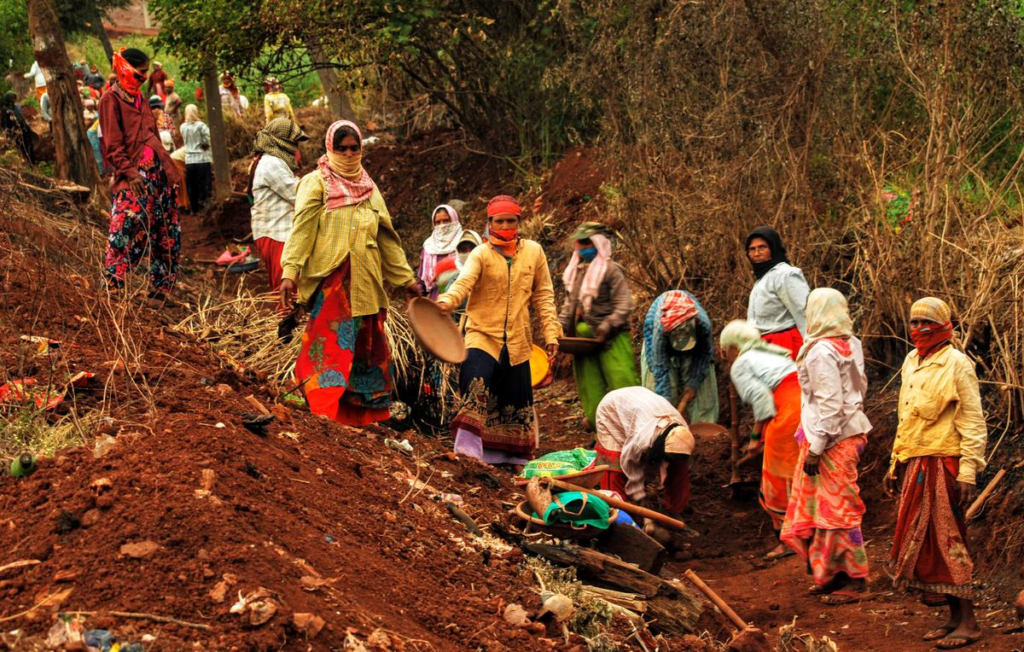With the passage of the Mahatma Gandhi National Rural Employment Guarantee Act in 2005, every rural family that requests it will receive 100 days of menial employment annually. The program presently has 15.51 crore active employees registered.
The Central government recently established a committee to evaluate the MGNREGA scheme’s execution, particularly to determine the program’s effectiveness as a tool for reducing poverty.
Amarjeet Sinha, a former secretary of rural development, chairs the group, which has three months to present its recommendations after holding its first meeting in November 2022.
What are the Problems with the Scheme’s Implementation?

Delay and Insufficiency in Funds Disbursement: As required by MGNREGA, the majority of governments have failed to pay salaries within 15 days. The plan has become a supply-based program as a result, which has caused workers to lose interest in working under it. In addition, workers are not paid for a delay in delivery of wages.
There is now plenty of proof that salary payout delays are due to a lack of funds, including an admission from the Ministry of Finance.
tribe-based segregation: The delays varied significantly by tribe. While 46% of payments to SC (Scheduled Caste) employees and 37% of payments to ST (Scheduled Tribes) employees were finished within the required seven days, the number for non-SC/ST employees was a pitiful 26%.
Caste-based division had a detrimental effect that was particularly felt in impoverished States like Madhya Pradesh, Jharkhand, Odisha, and West Bengal.
Due to their lack of autonomy, Panchayati Raj Institutions (PRI) are unable to execute this act in a timely and effective way.
Numerous incomplete projects: The MGNREGA-funded projects have taken longer than expected to finish, and project inspections have been inconsistent. Additionally, there is a problem with the MGNREGA’s asset production and job quality.
Fabrication of job cards: There are a number of problems associated with fabricating job cards, including the use of fictitious identities, lacking information, and late entries.
What are the MGNREGA Program’s Key Achievements?
Results for 2022–2023:
There were 11.37 billion people with jobs.
A total of 289.24 billion person-days have been employed as a result of:
Women made up 56.19 %.
For Scheduled Castes, 19.75%.
For Scheduled Tribes, 17.47%.▪ New Programs Under the MGNREGS:
By Amrit Sarovar Each region of the nation should build or renovate at least 75 Amrit Sarovars (ponds), which will help to increase the amount of water that is available both above and below earth.
App Jaldoot: It was started in September 2022 to measure the water level in a Gram Panchayat using two or three carefully chosen open wells.
Inquiry-handler for MGNREGS: In order to facilitate the filing and classification of complaints received from various sources regarding the execution of, the Ombudsperson App was introduced in February 2022.
What should the next step be?
Addressing wage payment delays entails: Improving the financial management system, including prompt and regular transfers of funds to the administering agencies and regular transfers of funds to the states.
Improving the implementing organizations’ administrative capability and responsibility.
Increasing the efficiency and openness of the salary payment process, including the use of online resources and tools to monitor payments and avoid delays.
Strengthen Implementation Capabilities: Reforms cannot be founded on greater “targeting” for a uniform, demand-based social welfare program like MGNREGA. Focus must be placed on rejection rather than “errors” in inclusion.
Exclusion must be recognized at the family level rather than relying solely on poverty in terms of expenditure and revenue.
There is sufficient proof to demonstrate that MGNREGA is reasonably well focused, helping the lowest, particularly families belonging to Scheduled Caste (SC) and Scheduled Tribe (ST) communities.
There is room for growth, though.
For instance, it is important to identify the panchayats, divisions, and districts where SC and ST families’ job rates are lower than their share of the population.
This would point to areas where the program’s most marginalized people are being pushed out.

